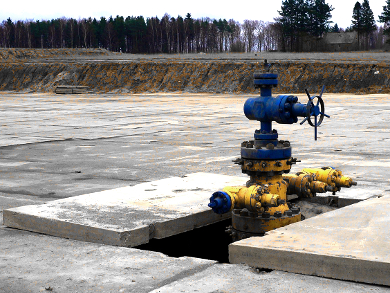Lauren Patterson, Duke University, Durham, NC, USA, and colleagues have investigated how many leakages of oil, fracking fluids, and other chemicals there are in fracking sites. The team evaluated all 30,000 abandoned sites in the four U.S. states Colorado, North Dakota, Pennsylvania, and New Mexico, using data from 2005 to 2014.
More than 6,600 leaks and leakages of different sizes were reported in these four federal states. Between 2 % and 16 % of the fracking plants have reported at least one spill each year. Median spill volumes in different states ranged from 0.5 m3 to 4.9 m3, and the largest spills had volumes of over 100 m3. Regulations differ between the states regarding the size at which a leak must be reported. In North Carolina, for example, spills over 42 gallons released into the environment need to be reported, in New Mexico, the lower limit is 120 gallons of liquid.
The number of fracking spills is significantly higher than the U.S. Environmental Protection Agency (EPA) had so far calculated. They only counted 457 leaks in six years, since the agency only takes account of spills in the fracking process itself, not the whole process of unconventional oil and gas production. Most leakages were not caused by gas and oil production itself, but by leaky storage tanks or leaks in pipes. The material or the equipment were not always responsible: 700 cases were caused by human failure. In about 4,000 cases, the exact cause has not yet been clarified.
Among the released substances were water, fracking liquids, petroleum, and a mixture of oil and salt water, as well as various chemicals, diesel, and oils needed for the operation of pumps and machines. In many cases, contamination of water or groundwater occurred. Between 75 % and 94 % of spills occurred within the first three years of operation of a fracking system. This is due to the fact that wells are being drilled and completed and that the production volumes are largest during this time.
According to the researchers, enhanced and standardized regulations for reporting spills could help to identify and prevent spill risks and reduce potential environmental damage. The team designed an interactive spills data visualization tool to illustrate the value of standardized public data.
- Unconventional Oil and Gas Spills: Risks, Mitigation Priorities, and State Reporting Requirements,
Lauren A. Patterson, Katherine E. Konschnik, Hannah Wiseman, Joseph Fargione, Kelly O. Maloney, Joseph Kiesecker, Jean-Philippe Nicot, Sharon Baruch-Mordo, Sally Entrekin, Anne Trainor, James E. Saiers,
Environ. Sci. Technol. 2017.
DOI: 10.1021/acs.est.05749




